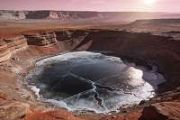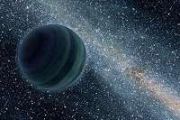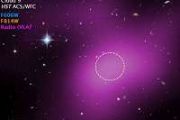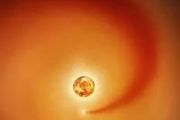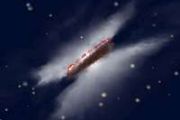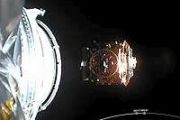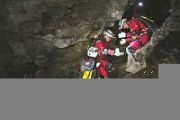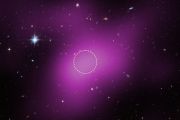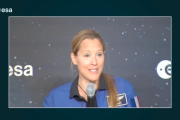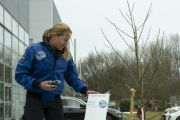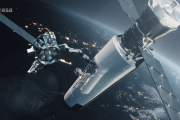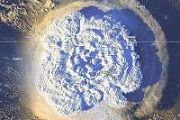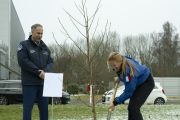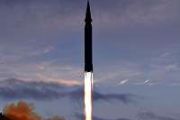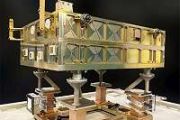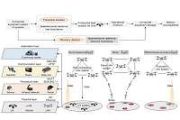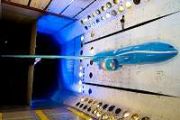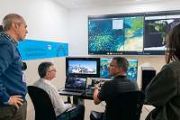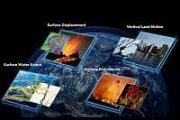
Copernical Team
To find a planet, look for the signatures of planet formation
 Finding forming planets is a tough but important job for astronomers: Only three planets have ever been discovered caught in the process of forming, and the most recent of these was found just weeks ago.
Evan Rich, a postdoctoral researcher at the University of Michigan, suggests that instead of looking for individual planets forming, astronomers might have better luck looking for the like
Finding forming planets is a tough but important job for astronomers: Only three planets have ever been discovered caught in the process of forming, and the most recent of these was found just weeks ago.
Evan Rich, a postdoctoral researcher at the University of Michigan, suggests that instead of looking for individual planets forming, astronomers might have better luck looking for the like Astronomers discover a multiplanet system nearby
 Astronomers at MIT and elsewhere have discovered a new multiplanet system within our galactic neighborhood that lies just 10 parsecs, or about 33 light-years, from Earth, making it one of the closest known multiplanet systems to our own.
At the heart of the system lies a small and cool M-dwarf star, named HD 260655, and astronomers have found that it hosts at least two terrestrial, Earth-s
Astronomers at MIT and elsewhere have discovered a new multiplanet system within our galactic neighborhood that lies just 10 parsecs, or about 33 light-years, from Earth, making it one of the closest known multiplanet systems to our own.
At the heart of the system lies a small and cool M-dwarf star, named HD 260655, and astronomers have found that it hosts at least two terrestrial, Earth-s Dead star caught ripping up planetary system
 A star's death throes have so violently disrupted its planetary system that the dead star left behind, called a white dwarf, is siphoning off debris from both the system's inner and outer reaches. This is the first time astronomers have observed a white dwarf star that is consuming both rocky-metallic and icy material, the ingredients of planets.
Archival data from NASA's Hubble Space Tele
A star's death throes have so violently disrupted its planetary system that the dead star left behind, called a white dwarf, is siphoning off debris from both the system's inner and outer reaches. This is the first time astronomers have observed a white dwarf star that is consuming both rocky-metallic and icy material, the ingredients of planets.
Archival data from NASA's Hubble Space Tele China says it detected alien signals using giant 'Sky Eye' telescope
 Scientists in China have announced that they've detected what may be signals from an alien civilization using the world's largest radio telescope, but warned they could be just radio interference.
Science and Technology Daily, the official newspaper of China's Ministry of Science and Technology, reported Tuesday that the team of scientists from Beijing Normal University identified two g
Scientists in China have announced that they've detected what may be signals from an alien civilization using the world's largest radio telescope, but warned they could be just radio interference.
Science and Technology Daily, the official newspaper of China's Ministry of Science and Technology, reported Tuesday that the team of scientists from Beijing Normal University identified two g Sols 3503-3504: And We're Back
 The Sol 3496 (last Monday) plan did not execute due to an issue onboard the rover that took a few days to investigate. Today, we were back to normal operations, and we were able to accomplish everything that was in the Sol 3496 plan as reported by my fellow blogger Cat O'Connell-Cooper, and more!
More was possible because we had slightly different communication windows between Curiosity an
The Sol 3496 (last Monday) plan did not execute due to an issue onboard the rover that took a few days to investigate. Today, we were back to normal operations, and we were able to accomplish everything that was in the Sol 3496 plan as reported by my fellow blogger Cat O'Connell-Cooper, and more!
More was possible because we had slightly different communication windows between Curiosity an NASA, Partners establish new research group for Mars Sample Return Program
 Sixteen scientists from the U.S., Europe, Canada, and Japan have been chosen to help future samples from the Red Planet achieve their full potential.
NASA and ESA (European Space Agency), its partner in the Mars Sample Return Program, have established a new group of researchers to maximize the scientific potential of Mars rock and sediment samples that would be returned to Earth for in-dep
Sixteen scientists from the U.S., Europe, Canada, and Japan have been chosen to help future samples from the Red Planet achieve their full potential.
NASA and ESA (European Space Agency), its partner in the Mars Sample Return Program, have established a new group of researchers to maximize the scientific potential of Mars rock and sediment samples that would be returned to Earth for in-dep ESA and NASA take decisions and plan for the future
 The next steps in exploring and using space for the benefit of European citizens were this week on the agenda at ESA's Council meeting in ESA/ESTEC, the Netherlands on 14 and 15 June. The possibility of the first-ever European astronaut to set foot on the Moon, a telecommunication satellite for lunar exploration and a mission to return precious rock samples from Mars were all discussed.
NA
The next steps in exploring and using space for the benefit of European citizens were this week on the agenda at ESA's Council meeting in ESA/ESTEC, the Netherlands on 14 and 15 June. The possibility of the first-ever European astronaut to set foot on the Moon, a telecommunication satellite for lunar exploration and a mission to return precious rock samples from Mars were all discussed.
NA Hera asteroid mission's first step
 A key element of ESA's Hera mission for planetary defence has left the facilities of its manufacturer OHB in Bremen - a major step in preparation for its eventual odyssey to the Didymos asteroid system.
The mission's Propulsion Module flight model, seen here, has been delivered to Avio, southeast of Rome, where propellant tanks, thrusters and associated pipes and valves will be integrated
A key element of ESA's Hera mission for planetary defence has left the facilities of its manufacturer OHB in Bremen - a major step in preparation for its eventual odyssey to the Didymos asteroid system.
The mission's Propulsion Module flight model, seen here, has been delivered to Avio, southeast of Rome, where propellant tanks, thrusters and associated pipes and valves will be integrated Sidus Space working with NASA team for Extravehicular Activity Services Contract
 Sidus Space, Inc. (NASDAQ:SIDU), a Space-as-a-Service company focused on mission critical hardware manufacturing; multi-disciplinary engineering services; satellite design, production, launch planning, mission operations; and in-orbit support is proud to announce that it is part of the Collins Aerospace team which was awarded NASA's Exploration Extravehicular Activity (xEVAS) services contract.
Sidus Space, Inc. (NASDAQ:SIDU), a Space-as-a-Service company focused on mission critical hardware manufacturing; multi-disciplinary engineering services; satellite design, production, launch planning, mission operations; and in-orbit support is proud to announce that it is part of the Collins Aerospace team which was awarded NASA's Exploration Extravehicular Activity (xEVAS) services contract. Sierra Space to train astronauts at Kennedy Space Center for Orbital Reef
 Sierra Space announced Tuesday the company will open an astronaut training center at Florida's Kennedy Space Center to build and operate a new commercial space station.
The Sierra Space Human Spaceflight Center and Astronaut Training Academy will train astronauts to work on Orbital Reef, a private business park space station to be built in partnership with Blue Origin for space tourists. S
Sierra Space announced Tuesday the company will open an astronaut training center at Florida's Kennedy Space Center to build and operate a new commercial space station.
The Sierra Space Human Spaceflight Center and Astronaut Training Academy will train astronauts to work on Orbital Reef, a private business park space station to be built in partnership with Blue Origin for space tourists. S 







